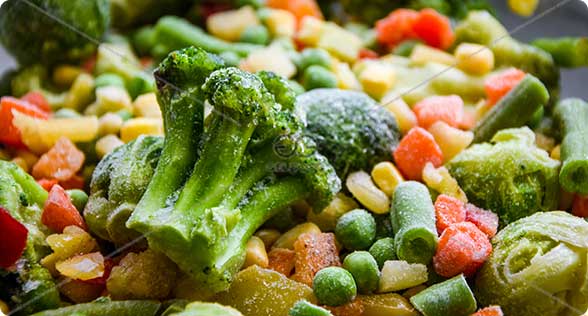
With the continuous development of vegetable freezing machine technology, frozen vegetables are widely used around the world due to their convenience, freshness preservation, and low nutrient loss. During the processing, storage and transportation of frozen vegetables, vegetable freezing temperature is the key factor that determines the quality and preservation of vegetables.

The basic principle of vegetable freezing
The essence of vegetable freezing is to freeze the water in the vegetables into ice, thereby inhibiting the activity of microorganisms and enzymes, and achieving the purpose of extending the shelf life. Vegetables have a high water content (generally 70%-95%). During the freezing process, the water freezes to form crystals. If the freezing speed is slow or the temperature is not low enough, larger ice crystals are easily formed, which damage the cell structure and affect the taste and nutrition.
Freezing temperature requirements for different vegetables
The suitable temperature for frozen vegetables is usually divided into two stages: quick freezing temperature and storage temperature:
Vegetable type Recommended quick freezing temperature
Beans (such as green beans, French beans) -35℃ ~ -40℃
Leafy vegetables (such as spinach, rapeseed) -35℃ ~ -40℃
Root vegetables (such as carrots, potatoes) -30℃ ~ -40℃
Mushrooms (such as shiitake mushrooms, oyster mushrooms) -35℃ ~ -40℃
The storage temperature of frozen vegetables is required to be below -18℃
Factors affecting vegetable freezing temperature
Vegetable varieties and structure
The tissue structure of different vegetables varies greatly. Leafy vegetables have thinner cell walls, which are easily damaged by ice crystals and mushy; root vegetables have thicker cell walls and are more tolerant to freezing.
Pretreatment process
Blanching before freezing can inactivate enzymes, reduce browning reactions, and help freeze preservation. However, the blanching temperature and time need to be precisely controlled to avoid overcooking.






